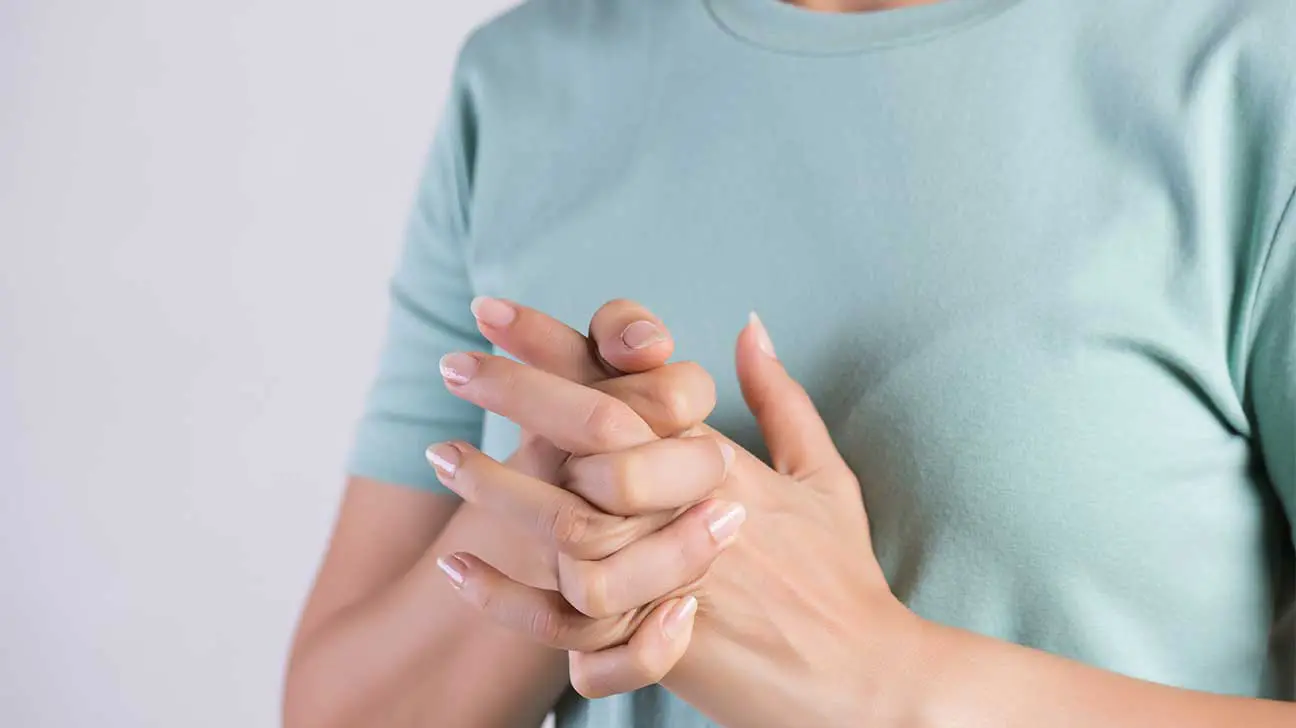
Body-focused repetitive disorders, also called body-focused repetitive behaviors or BFRBs, are a group of disorders that affect at least 5% of the general population. They can be painful and disfiguring as well as shameful and embarrassing for the person afflicted.
BFRBs are rarely found on their own and usually co-occur with other mental disorders and substance use disorders. This is because these behaviors are usually performed as a way of relieving anxiety or tension.
Substance use, and withdrawal in particular, can be a trigger for BFRBs.
Withdrawal alone can be an extremely uncomfortable experience and cause a person to feel new and painful sensations throughout their body, causing them to fixate in ways they never felt the need to before.
Learn more about co-occurring addiction and obsessive-compulsive related disorders
What Are Body-Focused Repetitive Disorders?
BFRBs is a general term that encompasses a few different disorders, almost all of which involve some form of unintentional self-harm to one’s own body but over an extended period of time.
Examples of body-focused repetitive disorders include:
- hair-pulling
- nail-biting
- skin picking
- scab picking and/or eating
- nail picking
- lip and cheek biting
- tooth grinding
- knuckle cracking
- mirror checking
BFRBs are considered to be an offshoot of obsessive-compulsive disorder, with the compulsion being the repeated act that the individual performs on their body. The behaviors associated with BFRBs are generally always related to self-grooming.
Some BFRBs, like mirror checking, will only be socially disruptive but not necessarily damaging physically.
Other BFRBs, like hair-pulling or skin picking, can cause significant physical damage to an individual’s appearance over time and result in great shame and embarrassment.
What Are The Signs Of Body-Focused Repetitive Disorders?
Some signs of BFRBs are very obvious, depending on how long the individual has been acting on their impulses.
For others, it can be a well-hidden secret that only they know about. Either way, the behavior will usually continue to progress until it becomes more difficult to hide.
Signs that someone has a body-focused repetitive disorder include:
- styling hair to cover bald spots
- wearing wigs
- penciling in patches of missing hair
- wearing clothing to hide skin damage
- wearing make-up to cover skin damage
- wearing gloves or keeping hands in pockets
While most BFRBs revolve around self-grooming practices, the individual is not typically worried about improving their appearance.
They often simply perform the behavior because they are tense or anxious and may not even be aware they are doing it.
The Relationship Between Addiction And Body-Focused Repetitive Disorders
Addiction and BFRBs have been known to occur together, although they most commonly occur while an individual is going through recovery or after.
This is because withdrawal symptoms for alcohol and various drugs include anxiety and itching, causing a person to fixate on their skin.
On the other hand, it has never been clearly defined whether BFRBs lead to drug or alcohol abuse.
However, people with these disorders often have some kind of co-occurring mental disorder, which does make substance abuse a greater risk.
How Are Addiction And Body-Focused Repetitive Disorders Diagnosed?
The first step for diagnosing addiction comes when the individual comes forward and acknowledges that they have a problem. Sometimes they are not able to do this themselves and a loved one steps in to find them help.
From this point, they will likely speak with multiple doctors and/or psychiatrists and may go through several physical exams or tests.
It should always be determined whether someone with a substance use disorder has any underlying mental disorders as well.
If someone is already showing signs of BFRB or seems to be at an increased risk for developing one during recovery, such as a family history of BFRB, then this will need to be addressed. This information could affect treatments, and specific medications that are given.
How Are Addiction And Body-Focused Repetitive Disorders Treated?
Treatment for addiction will usually include some form of medical detox, therapy, and medications, depending on the substance and the severity.
There is no single treatment or medication that has shown to be most effective for treating BFRBs, and usually a combination is needed.
Treatments for addiction and body-focused repetitive disorders include:
- medications
- cognitive behavioral therapy
- evidence-based treatment
- habit reversal training
- group therapy
- support groups
It is important to keep a close eye on someone during their recovery and watch for signs of developing BFRBs.
Certain substances are known to have particularly difficult withdrawal symptoms, and for these it is especially important.
Finding Treatment For Addiction And Body-Focused Repetitive Disorders
Addiction can be difficult to struggle with, especially when also faced with a body-focused repetitive disorder at the same time.
If you or a loved one is currently seeking information or treatment for substance abuse and BFRB, we welcome you to call our helpline.
We can help you find individualized dual diagnosis treatment programs to suit your needs and can get you the help that you need to enter addiction recovery.
Addiction Resource aims to provide only the most current, accurate information in regards to addiction and addiction treatment, which means we only reference the most credible sources available.
These include peer-reviewed journals, government entities and academic institutions, and leaders in addiction healthcare and advocacy. Learn more about how we safeguard our content by viewing our editorial policy.
- Anxiety.org — BFRBs: Compulsive Behaviors That Unintentionally Cause Physical Damage
https://www.anxiety.org/what-is-body-focused-repetitive-behavior-bfrb - Anxiety And Depression Association Of America — Body-Focused Repetitive Behaviors (BFRBs)
https://adaa.org/understanding-anxiety/co-occurring-disorders/body-focused-repetitive-behaviors - Merck Manual — Body-Focused Repetitive Behavioral Disorder
https://www.merckmanuals.com/home/mental-health-disorders/obsessive-compulsive-and-related-disorders/body-focused-repetitive-behavioral-disorder - National Library Of Medicine — Body focused repetitive behavior disorders: Significance of family history
https://pubmed.ncbi.nlm.nih.gov/26995252/ - Vice — Inside the Nightmarish Body Habit Disorders That Affect 'One in 50 People'
https://www.vice.com/en/article/wd7d3m/compulsive-skin-picking-bfrb-823


